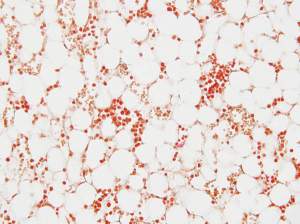
Bone Marrow Stem Cells after Heart Attack Doesn’t Help
On November 5, 2012, the National Institutes of Health announced that patients who receive stem cells from their own bone marrow three to seven days after a heart attack do not show greater heart function within six months.
The medical trial that looked into the treatment was called the Transplantation in Myocardial Infarction Evaluation (TIME). The trial had similar results to a previous study performed by TIME. The study looked into the effects of autologous stem cells, which are produced in bone marrow.
Sonia Karlatos, Ph.D., the deputy director of NHLBI’s Division of Cardiovascular Sciences, stated: “Heart stem cell therapy research is still in its infancy, and results from early trials have varied greatly due to differences in the numbers of stem cells injected, the delivery methods used, and the compositions of the study populations.” With the results from both of the TIME studies, Karlatos mentioned, “This standard will inform the next steps in research on the use of stem cells to repair damaged hearts.”
Researchers with TIME enrolled 120 volunteers between July 2008 and February 2011. The average age of the participants was 57, and 87.5 percent of the participants were male. All of the volunteers had moderate or severe blockage of the left ventricles and has received stents after heart attacks. The volunteers were assigned to four groups:
• group 1: injection of stem cells three days after heart attack
• group 2: injection of placebo three days after heart attack
• group 3: injection of stem cells seven days after heart attack
• group 4: injection of placebo seven days after heart attack
The participants that received stem cells were injected with 150 million stem cells 8 hours after the cells were taken from the marrow.
Even though the results were unsuccessful, CCTRN member Jay Travese, M.D., stated: “With this baseline now set, we can start to adjust some of the components of the protocol to grow and administer stem cells to find cases where the procedure may improve function.”
Source: National Institutes of Health
Comments
Must Read
 Beware of Medical Negligence
Beware of Medical NegligenceWhat is Medical Negligence?• Medical negligence is an alternative phrase or term for medical malpractice.
 Starting a Medical Malpractice Case
Starting a Medical Malpractice CaseWhat is a Medical Malpractice Case? • Medical malpractice occurs when a doctor or another medical professional (such as a nurse or technician) partakes in a negligent action or delivers a fraudulent action that causes an injury to a patient.
 Read This for Ultimate Misdiagnosis Information
Read This for Ultimate Misdiagnosis InformationWhat is a Misdiagnosis? • A misdiagnosis is an inaccurate diagnosis of a medical ailment.
 How to Handle a Medical Negligence Claim
How to Handle a Medical Negligence ClaimWhat is a Medical Negligence Claim?• A medical negligence claim is a direct legal action taken by a patient who falls victim to the negligent or wrongful actions of a medical provider or medical professional.
 3 Major Topics of Medical Malpractice Insurance
3 Major Topics of Medical Malpractice InsuranceWhat is Medical Malpractice Insurance?• Medical malpractice insurance is a financial-based instrument available only to physicians or those individuals involved in healthcare.
